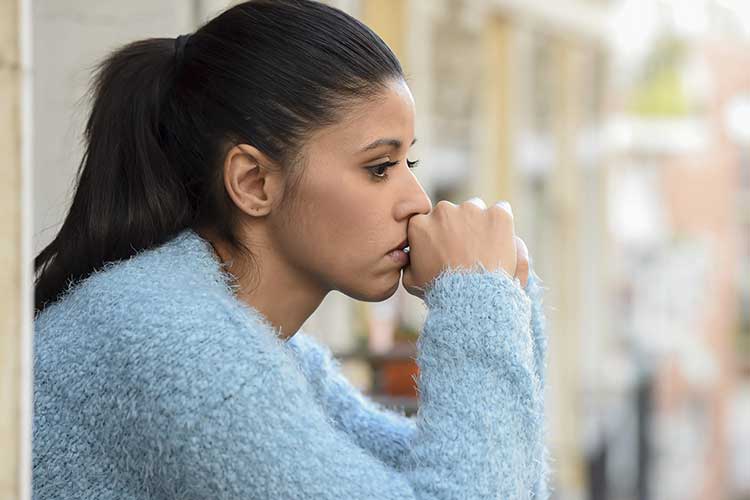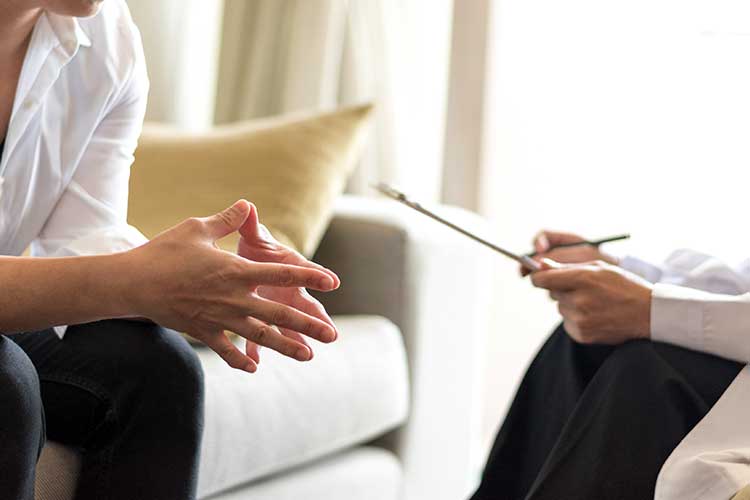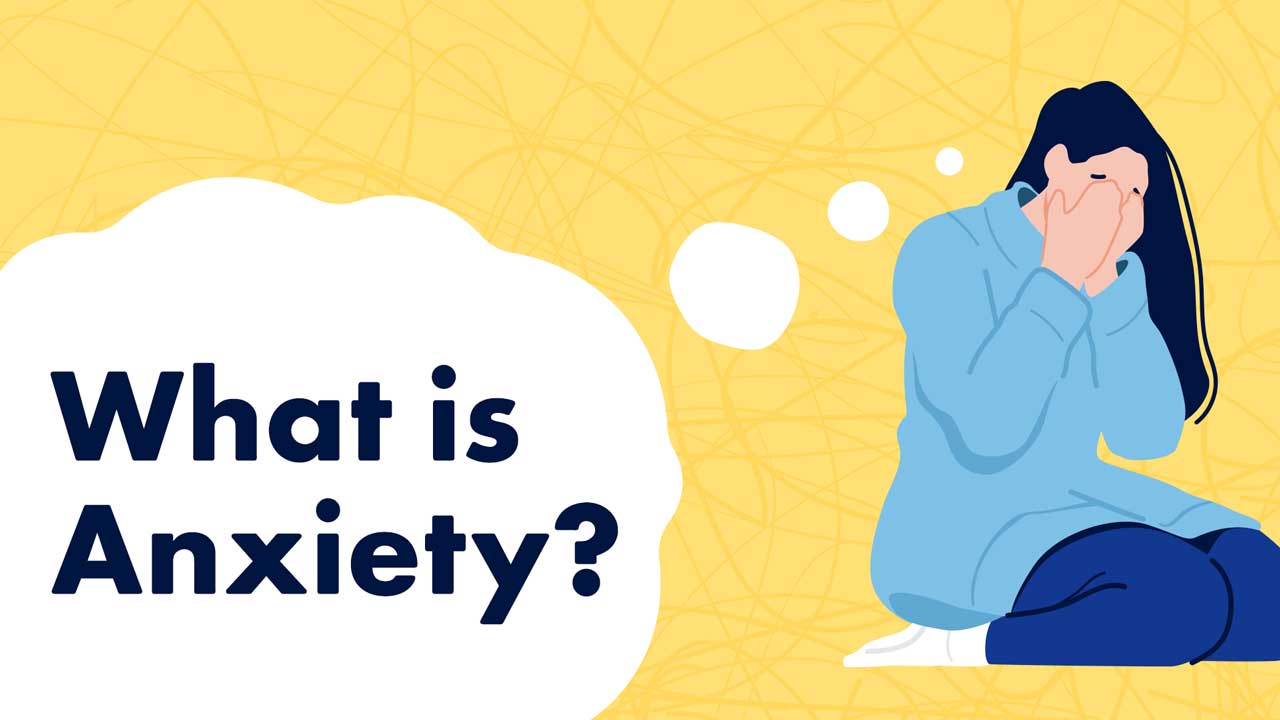Anxiety refers to a group of disorders that are collectively the most common mental health condition in Australia (Healthdirect 2024).
What is Anxiety?
Anxiety is an evolutionary safety mechanism that protects us from harm or danger by triggering the ‘fight or flight’ response (Black Dog Institute 2022).
It activates in response to a stressor, causing psychological and physical changes within the body so that the individual can confront the situation (Harvard Health Publishing 2024).
Every person experiences anxiety during their life - it’s normal and often helpful. However, in some cases, anxiety is unnecessarily constant and overwhelming, interfering with a person’s ability to go about their daily lives. This could indicate an anxiety disorder (Smith et al. 2025; Healthdirect 2024).
Anxiety disorders may disrupt several aspects of a person’s life, including their ability to concentrate, sleep or perform daily tasks. It may also cause an individual to avoid certain situations or leaving the house. In some cases, it can cause physical symptoms such as shortness of breath, a pounding heart or trembling hands (Healthdirect 2024).
Types of Anxiety Disorders
As per the Diagnostic and Statistical Manual of Mental Disorders (DSM-5-TR), anxiety is separated into two categories:
| Generalised anxiety disorder | An intense and constant worry that interferes with daily activities. |
| Panic disorder | A person experiences frequent panic attacks (sudden feelings of overwhelming and intense fear and distress). |
| Specific phobia | An intense and irrational fear towards a specific object or situation. |
| Agoraphobia | A fear of being in a situation where the individual is not able to easily escape if they experience a panic attack. |
| Social anxiety disorder | Severe anxiety and fear relating to social situations. |
| Separation anxiety disorder | A persistent and inappropriate fear of being separated from people the individual is attached to. |
| Selective mutism | A disorder where a person who is capable of speaking does not do so in certain social situations. It typically affects children. |
| Obsessive-compulsive disorder | A person experiences recurring obsessions (thoughts or images that cause anxiety) and feels an overwhelming need to perform compulsions (rituals or behaviours) in order to alleviate the obsessions. |
| Body dysmorphic disorder | A preoccupation with perceived flaws related to physical appearance, causing an individual to perform repetitive behaviours and thinking. |
| Hoarding disorder | A persistent difficulty with getting rid of possessions due to a perceived need to keep them. Throwing items out can cause significant distress for the person. |
| Trichotillomania | A disorder where an individual pulls out their own hair, usually from the scalp, eyebrows and eyelids. |
| Excoriation disorder | A disorder where an individual repeatedly picks at their own skin to the extent that it causes lesions. |
| Olfactory reference disorder | A disorder where an individual incorrectly believes they are emitting a foul body odour. |
(APA 2023, 2024)
How Common is Anxiety?
The most recent National Survey of Mental Health and Wellbeing conducted by the Australian Bureau of Statistics (2023) found that almost 17% of Australians had experienced an anxiety disorder in the past 12 months.
Anxiety is more common in women, with 21% of women experiencing an anxiety disorder during the past 12 months compared to 12.4% of men (ABS 2023).
Causes of Anxiety
It’s believed that anxiety disorders are caused by a combination of factors, including genetics, brain chemistry, personality and stressful life events such as:
- Unpredictable new situations (e.g. changing schools or jobs, or travelling)
- Pregnancy and childbirth
- Relationship issues
- Bereavement
- Financial or work problems
- Abuse
- Excessive use of drugs or alcohol
- Physical health problems.
(SANE 2024; Healthdirect 2024)
Signs and Symptoms of Anxiety

The symptoms of each specific anxiety disorder are set out in the DSM-5-TR, each with individual diagnostic criteria that should be met.
In a more general sense, there are some common symptoms that will often apply to anxiety disorders:
Psychological Symptoms
An individual may:
- Have excessive feelings of worry and fear about the past, present or future
- Feel apprehensive or powerless
- Feel as if something bad or dangerous is about to happen
- Have difficulty thinking about anything other than anxious thoughts
- Be tense and on edge
- Feel nervous or scared
- Panic
- Be irritable or agitated
- Worry that they are ‘going crazy’
- Feel detached from their body.
(Black Dog Institute 2022; Healthdirect 2024)
Psychical Symptoms
Physical symptoms are responses to fight or flight mode that would occur in the case of real danger (SANE 2024). They include:
- Pounding heart
- Shortness of breath
- Dizziness
- Trembling or twitching
- Sweating
- Nausea
- Abdominal pain
- ‘Pins and needles’
- Difficulty concentrating
- Difficulty sleeping
- Excessive thirst.
(Black Dog Institute 2022; Healthdirect 2024)
Behavioural Symptoms
Avoidance of certain situations that may cause anxiety, which can impact the person’s everyday life.
(Healthdirect 2024)
Diagnosing Anxiety
Refer to the DSM-5-TR for the full list of diagnostic criteria for anxiety disorders.
Anxiety Treatment and Management

There is a range of effective treatments for anxiety. Treatment generally falls within three categories:
- Psychological treatments, including cognitive-behavioural therapy (CBT), exposure therapy, mindfulness therapy, counselling etc.
- Medication
- Self-help and alternative therapies such as exercise, meditation, relaxation techniques, yoga and acupuncture.
(Black Dog Institute 2023)
Treatment may differ depending on the kind of anxiety disorder a person is experiencing and may involve a combination of the above strategies. Treatment should be individualised (Black Dog Institute 2023).
Anxiety is treatable and can be managed so that its impact on a person’s life lessens significantly. In some cases, it can be eliminated entirely (SANE 2024).
If you’re in crisis and need support, call Lifeline on 13 11 14. Lifeline is open 24 hours a day, 7 days a week.
Test Your Knowledge
Question 1 of 3
What is the primary function of anxiety as an evolutionary mechanism?
Topics
References
- American Psychiatric Association 2023, What are Anxiety Disorders?, APA, viewed 19 March 2025, https://www.psychiatry.org/patients-families/anxiety-disorders/what-are-anxiety-disorders
- American Psychiatric Association 2024, What is are Obsessive-Compulsive and Related Disorders?, APA, viewed 19 March 2025, https://www.psychiatry.org/patients-families/ocd/what-is-obsessive-compulsive-disorder
- Australian Bureau of Statistics 2023, National Study of Mental Health and Wellbeing, Australian Government, viewed 19 March 2025, https://www.abs.gov.au/statistics/health/mental-health/national-study-mental-health-and-wellbeing/latest-release
- Black Dog Institute 2022, Signs & Symptoms of Anxiety, Black Dog Institute, viewed 19 March 2025, https://www.blackdoginstitute.org.au/wp-content/uploads/2022/06/Signs-and-Symptoms-of-Anxiety-fact-sheet.pdf
- Black Dog Institute 2023, Anxiety Treatment, Black Dog Institute, viewed 19 March 2025, https://www.blackdoginstitute.org.au/resources-support/anxiety/treatment/
- Harvard Health Publishing 2024, Understanding the Stress Response, Harvard Medical School, viewed 19 March 2025, https://www.health.harvard.edu/staying-healthy/understanding-the-stress-response
- Healthdirect 2024, Anxiety, Australian Government, viewed 19 March 2025, https://www.healthdirect.gov.au/anxiety
- SANE 2024, Anxiety Disorders, SANE, viewed 19 March 2025, https://www.sane.org/information-and-resources/facts-and-guides/anxiety-disorder
- Smith, M, Robinson, L, Segal, J & Reid, S 2025, Anxiety Disorders and Anxiety Attacks, HelpGuide, viewed 19 March 2025, https://www.helpguide.org/mental-health/anxiety/anxiety-disorders-and-anxiety-attacks
 New
New 
